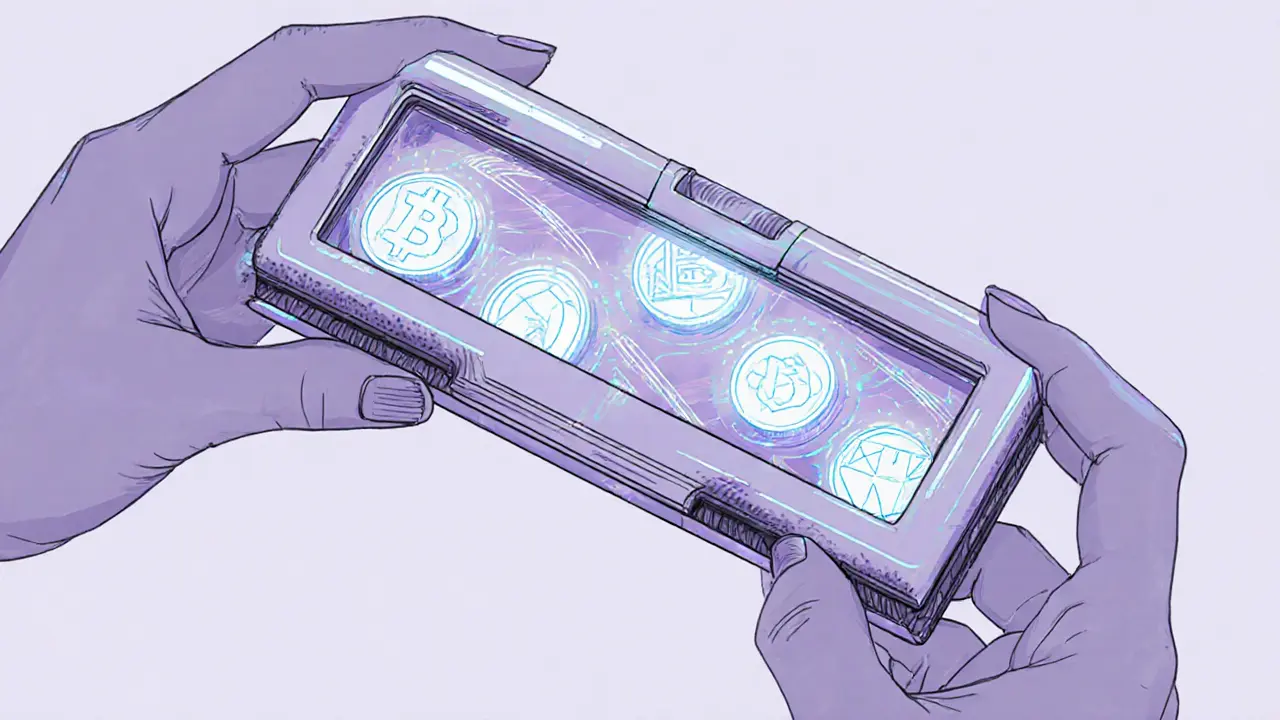Blockchain Gaming Economy Explorer
Key Features
- NFT Asset Ownership
- Peer-to-Peer Trading
- Cross-Game Interoperability
- Decentralized Governance
Economic Models
- Play-to-Earn Mechanics
- Supply & Demand Dynamics
- Inflation & Market Bubbles
- Guild & DAO Structures
Comparison Table: Traditional vs Blockchain Games
| Aspect | Traditional MMOs | Blockchain Games |
|---|---|---|
| Asset Ownership | Publisher-controlled; items disappear if servers shut down. | Player-controlled via NFTs; assets persist on-chain. |
| Marketplace | Closed, in-game shop or third-party grey market. | Open, peer-to-peer or decentralized exchanges. |
| Interoperability | Rare; items stay inside one game. | High; same token can be used across compatible titles. |
| Currency | Gold, credits - only usable in-game. | Cryptocurrency (e.g., $AXS, $SLP) - tradable for fiat. |
| Governance | Developer-only decisions. | DAO voting gives players a voice. |
Real-World Examples
Economic Dynamics
- Rarity drives scarcity
- Skilled players earn more
- Guilds and DAOs govern communities
- Public blockchain analytics
Challenges & Future Trends
Current Challenges
- Scalability limitations
- Regulatory uncertainty
- Complex user experience
Future Outlook (2026+)
- Cross-game asset standards
- Sophisticated DAOs
- DeFi integration
When you hear the term virtual economies in blockchain games is a digital marketplace inside a video game where assets are stored on a blockchain, giving players true ownership and the ability to trade those assets for real value. That simple idea reshapes how games make money, how players earn, and even how entire virtual worlds run like miniature economies.
Why Blockchain Changes the Game
Traditional games keep every item, gold, or skin on their own servers. The publisher decides who can buy, sell, or even see an item. In contrast, blockchain games NFTs unique, non‑fungible tokens that represent in‑game assets on a public ledger and crypto wallets software accounts that hold private keys and act as a player’s universal identity. Those two tools alone give players:
- Provable ownership that survives a game’s shutdown.
- Instant peer‑to‑peer trades without a central marketplace.
- Access to the same asset across multiple games that support the same token standard.
Core Building Blocks
Every blockchain gaming economy a system where in‑game value is recorded on a decentralized network rests on three technical pillars.
- Tokenization: Items, characters, land parcels, and even achievements become ERC‑721 or ERC‑1155 tokens.
- Smart contracts: Self‑executing code that enforces trade rules, royalties, and play‑to‑earn payouts.
- Decentralized governance: Communities use DAOs organizations where token holders vote on game changes to steer development.
Traditional vs. Blockchain Virtual Economies
| Aspect | Traditional MMOs | Blockchain Games |
|---|---|---|
| Asset Ownership | Publisher‑controlled; items disappear if servers shut down. | Player‑controlled via NFTs; assets persist on-chain. |
| Marketplace | Closed, in‑game shop or third‑party grey market. | Open, peer‑to‑peer or decentralized exchanges. |
| Interoperability | Rare; items stay inside one game. | High; same token can be used across compatible titles. |
| Currency | Gold, credits - only usable in‑game. | Cryptocurrency (e.g., $AXS, $SLP) - tradable for fiat. |
| Governance | Developer‑only decisions. | DAO voting gives players a voice. |

Real‑World Examples
Two projects illustrate how the theory works in practice.
- Decentraland: A virtual world where plot ownership is an NFT a unique token representing a piece of virtual land on Ethereum. Users build galleries, host concerts, and sell tickets-earning real cryptocurrency.
- Axie Infinity: Pioneered the play‑to‑earn model where gameplay generates tradable tokens model. Players breed, battle, and sell Axies for $SLP, which can be swapped for fiat on exchanges.
Both games show how blockchain gaming economies can turn time spent in‑game into tangible income.
Economic Dynamics Inside the Blockchain
Just like real markets, virtual economies experience supply‑demand swings, inflation, and even bubbles.
- Rivalry: Rare NFTs can only be owned by one player at a time, creating scarcity.
- Human capital: Skilled players earn more tokens, boosting their buying power.
- Guilds and DAOs: Groups pool resources, fund development, and vote on policy changes, similar to cooperatives.
Because every transaction is public on the blockchain, analytics tools can track price trends, liquidity, and player behavior in near‑real time.
Challenges and Risks
No technology is perfect. Blockchain games face three major hurdles.
- Scalability: High traffic can clog networks, as CryptoKitties did on Ethereum in 2017.
- Regulation: Governments are still deciding how to tax in‑game earnings and whether NFTs qualify as securities.
- User experience: Managing crypto wallets, gas fees, and private keys adds friction for casual gamers.
Developers mitigate these issues by using layer‑2 solutions, designing low‑fee tokenomics, and offering custodial wallet options.
Future Outlook
Looking ahead to 2026 and beyond, three trends are likely to shape the space.
- Cross‑game asset standards: Protocols like ERC‑1155 will let a sword purchased in one title appear in another.
- More sophisticated DAOs: Voting power may be tied to in‑game achievements, not just token holdings.
- Integration with DeFi: Players could stake their NFTs to earn yield while they’re idle.
When those pieces lock together, the line between a video game and a micro‑economy will blur even further.

Frequently Asked Questions
What exactly is a virtual economy?
A virtual economy is a system inside a digital world where players can buy, sell, or trade goods and services, often using an in‑game currency. In blockchain games, those goods are tokenized, so ownership is recorded on a public ledger.
How do NFTs give me ownership?
When an item is minted as an NFT, the blockchain stores a unique identifier and the owner’s wallet address. No central server can revoke that ownership without your private key, meaning the asset lives as long as the blockchain does.
Can I earn real money from playing?
Yes, many games reward players with tradable tokens (e.g., $SLP in Axie Infinity). Those tokens can be exchanged on crypto exchanges for fiat currency, subject to local tax laws.
What is a DAO and why does it matter?
A DAO (Decentralized Autonomous Organization) lets token holders vote on game updates, economic parameters, or new features. It shifts decision‑making power from developers to the community, fostering deeper engagement.
Are there risks of market bubbles?
Because assets are tradable for real money, speculative buying can drive prices far above utility value. History shows games like CryptoKitties and early Axie markets experiencing sharp corrections.
How do transaction fees affect gameplay?
Each blockchain action requires a gas fee. High fees can make small trades uneconomical, so developers often use layer‑2 chains or batch transactions to keep costs player‑friendly.
Is my data private?
Blockchains are transparent: anyone can see wallet addresses and transaction amounts. However, personal identity isn’t linked unless you voluntarily share it, so pseudo‑anonymity is maintained.
Will traditional game studios adopt blockchain?
Some large publishers are experimenting with NFT tie‑ins and token‑based rewards, but widespread adoption hinges on solving scalability and user‑experience challenges first.

